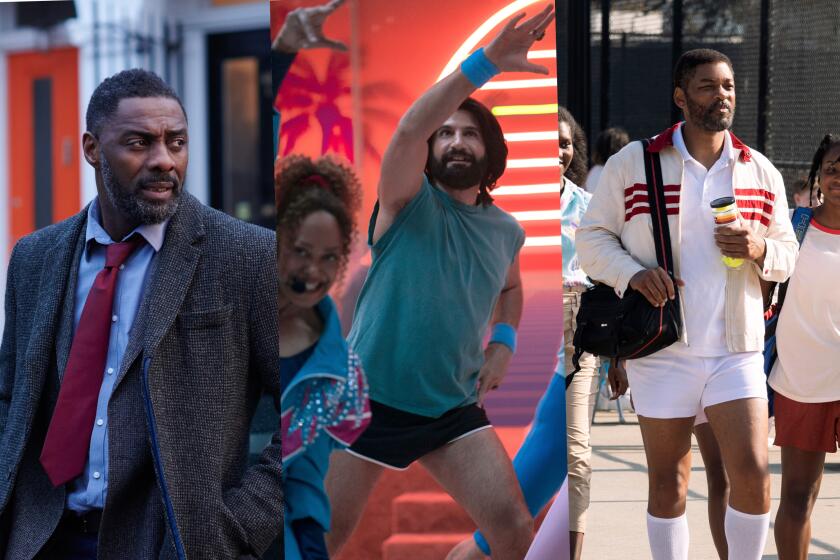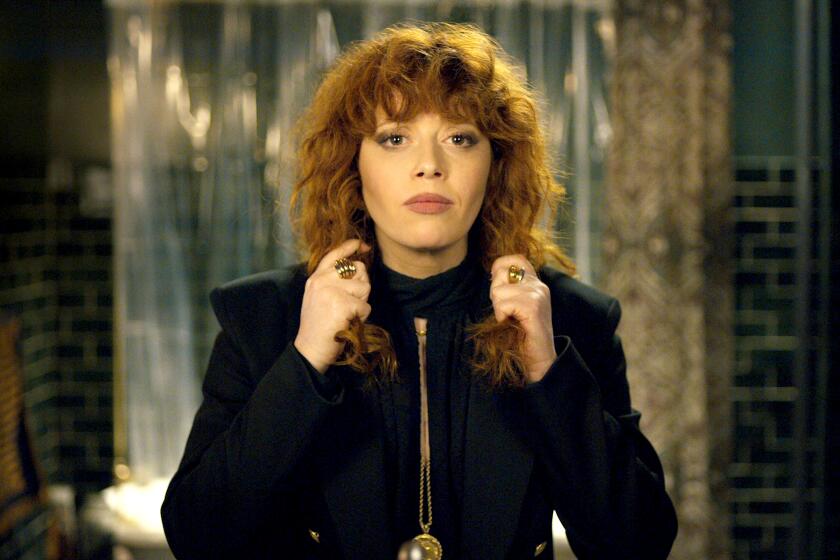‘Let It Be’ was never the Beatles’ breakup movie. Peter Jackson’s new doc shows why
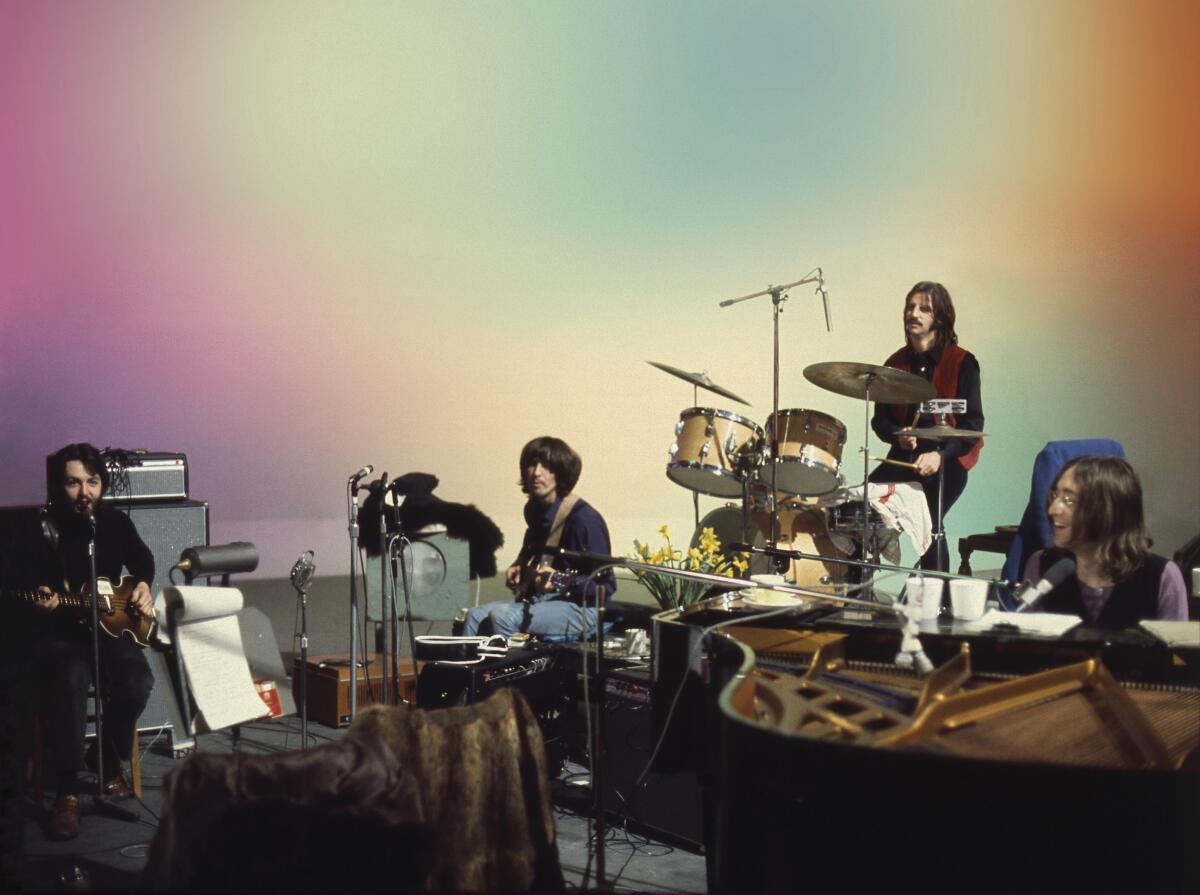
- Share via
In early January 1969, as the Beatles tried to wrestle a new song, “Two of Us,” into shape, Paul McCartney and George Harrison fell into a debate about Harrison’s guitar part, one that echoed an argument they’d had the previous year while rehearsing “Hey Jude.”
“I’ll play, you know, whatever you want me to play,” Harrison said at one point. “Or I won’t play at all if you don’t want me to play.”
It was a tense but civil discussion. By the time Michael Lindsay-Hogg’s fly-on-the-wall film “Let It Be” was released in May 1970, however, the moment, and the film, looked very different. The Beatles had just broken up, and Lindsay-Hogg’s footage was seen as a document of a band in the process of disintegrating. McCartney and Harrison’s exchange was one symbol of the collapse.
“These were musicians knuckling down to work and having affectionate times and sometimes getting annoyed,” Lindsay-Hogg says. “I saw that as a discussion between artists having a small disagreement. I wanted it in the movie because it was a true interaction but then suddenly it became, ‘That’s why they broke up.’”
In truth, despite occasional bickering, the band spent the rest of the month developing and recording what would become the album “Let It Be,” while also rehearsing songs that landed on their final masterpiece, “Abbey Road,” and on solo albums by McCartney, Harrison and John Lennon.
In this special Thanksgiving weekend edition of Screen Gab, the TV and film teams at The Times talk about what we’re watching on our days off.
That disconnect between the perception and the reality of the “Get Back” sessions of early 1969 and its role in the band’s demise has lingered for half a century in the minds of fans — and the Beatles themselves. Lennon later called it “the most miserable session on Earth,” and McCartney said the film “showed how the breakup of a group works.”
Now Peter Jackson’s seven-hour-plus docuseries “Get Back,” premiering Thursday on Disney+, aims to redirect the spotlight to the Beatles’ creative camaraderie and affectionate goofing that were the actual heart of those sessions.
Lindsay-Hogg says his film was “unfairly tarred” by the timing of its release. Jackson, who originally saw the movie years removed from that 1970 context, and who as a teen listened to bootlegs like “Hahst Az Sön” that revealed the pleasure the Beatles took in jamming together, agrees.
“It’s a weird case of memory and fact being warped by the events of the time,” Jackson says, adding that the Beatles’ memories of those sessions were shaped by the movie coming out just after their split.
“Even today, Paul and Ringo think back to the 1969 sessions through a filter of ‘Let It Be’ in 1970, a time that was very contentious and upsetting for them. Time sort of collapsed reality and fiction.”
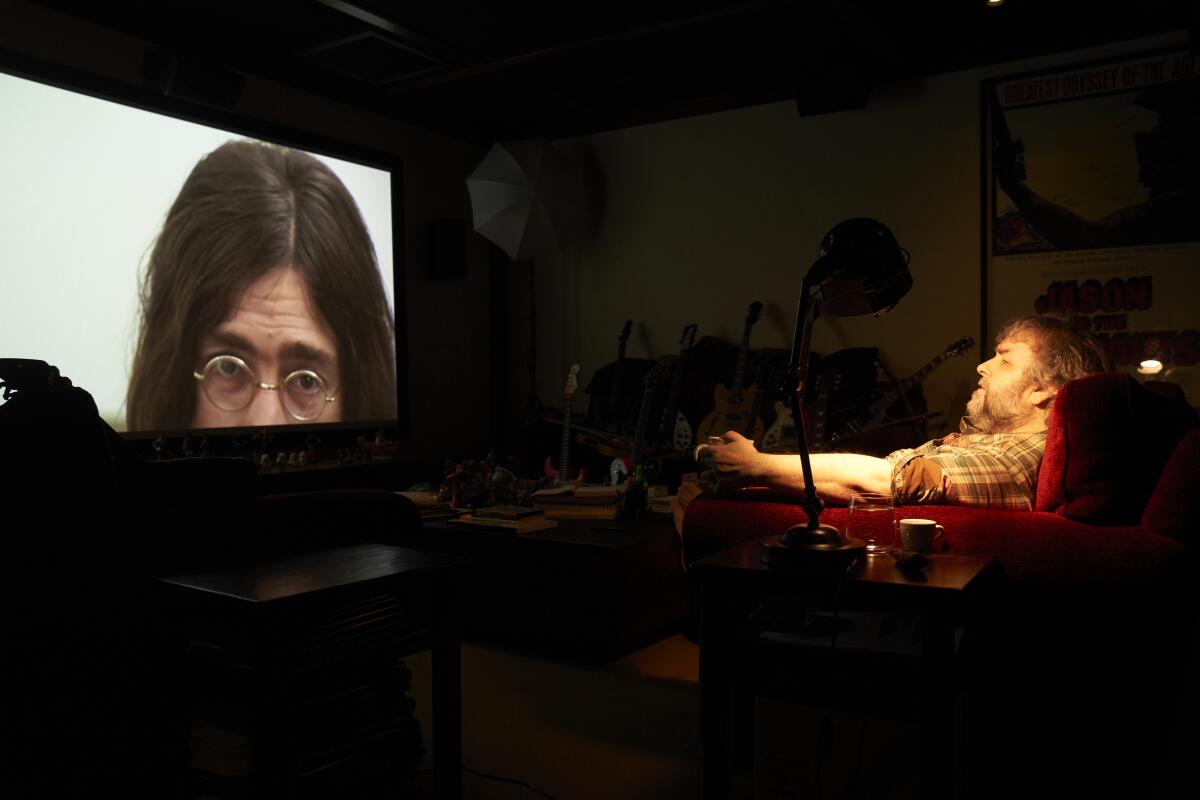
Disney’s marketing campaign for the series, originally planned as a feature film, proclaims Jackson’s project finally tells the “real story.” But Jackson acknowledges that’s a slippery term.
“The truth is a complicated concept, but I’ve tried to tell the story as accurately as possible,” Jackson says, adding that there’s a level of manipulation the minute a director makes a single edit.
Jackson was given 57 hours of footage and 140 hours of audio recording, but “you can’t even call that the truth,” he says. “That’s only when Michael was filming, or they were recording. But there were conversations happening, say, in the evening.
“Still, it’s closer to the truth than people’s memories or than what a shorter version would have been,” he says. “I was always aware you can warp things through reduction and taking things out of context.” The extended runtime avoided that problem, giving him “the luxury to flesh things out.”
As an example, Jackson cites the “Two of Us” argument, which in the original film was just 45 seconds, even though it was part of a 90-minute session. “We couldn’t show all that but our version of it is seven or eight minutes, which is more context than what Michael could do,” says the director of the “Lord of the Rings” and “Hobbit” films. The conversation “was no different from what I’ve seen on my films,” he adds. “I know what it’s like to be under pressure on a project.”
That’s not to say the band wasn’t having troubles. Days after the incident, Harrison quit the band, an event that was left out of “Let It Be.” Harrison came to a table where his mates were having lunch and offered a low-key resignation, saying, “See you around the clubs.”
We surveyed The Times TV team to come up with a list of the 75 best TV shows you can watch on Netflix. As in, tonight.
Lindsay-Hogg had secretly slipped a recording device in a nearby flowerpot, but when he played the tape back later, “All I could hear was the crackle of cutlery.” Still, he would not have used the footage anyway, he says: The group made it clear (without expressly stating anything) that they didn’t want Harrison’s departure (or Lennon’s suggestion that they simply replace him with Eric Clapton) to be part of the film. “They didn’t want it in there because at that point they weren’t breaking up,” Lindsay-Hogg says. Harrison returned the following week.
Jackson, who used modern technology to separate out the voices, includes Harrison’s walkout. As for the conventional wisdom that Lennon was through being a Beatle and Harrison wanted out because too few of his songs were being used, Jackson found footage in which Lennon tells Harrison that each Beatle could make solo records and still return for a band project. (There are also moments where McCartney defends Lennon’s endlessly intense relationship with Yoko Ono, which also defies the traditional narrative.)
Giles Martin, son of legendary Beatles producer George Martin, suggests that while the Beatles had been growing apart, the tensions seen on film derived largely from the challenge the band had created for themselves — being filmed while creating an album almost from scratch and planning a concert for the project’s finale after years of resisting playing live.
“I don’t think it’s a document of a band in trouble. It’s a document of a band struggling with a ridiculously ambitious project,” says Martin, who was born nine months after these sessions and remixed the sound for Jackson’s documentary and accompanying music releases. “Any band putting themselves in that situation — to create a live album without songs written in three weeks’ time — would have difficulties.”
The real nail in the coffin for the Beatles came later, when Lennon brought in Allen Klein to manage the band, thus pitting him against John and Lee Eastman, McCartney’s new brother- and father-in-law, respectively. Harrison and Ringo Starr sided with Lennon and the business disputes drove an unbreakable wedge. (Klein proved to be somewhere between sleazy and outright crooked.)
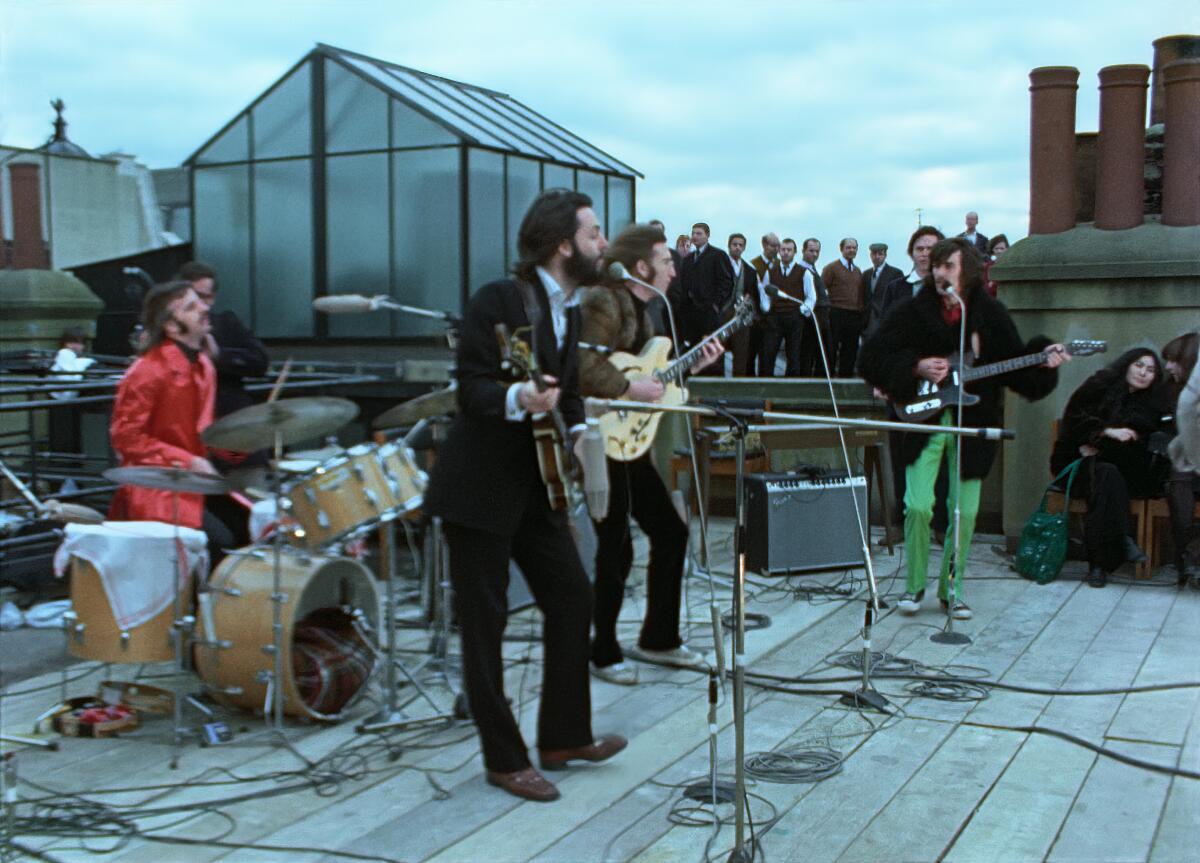
Ultimately, Martin says, the breakup may have been inevitable: “My father always said the surprising thing was not why they broke up but how they stuck together for so long. They were so relentless with putting demands on themselves, which was just crazy.”
By the time Lindsay-Hogg showed the band a first cut of “Let It Be,” hostilities had risen far beyond where they’d been in January.
“[Beatles employee] Peter Brown called to say, ‘I’ve had three phone calls this morning from people who think there was too much John and Yoko,’” Lindsay-Hogg recalls. He also was pressured to make other cuts, including by Klein.
Jackson got to tell the story the way he wanted, without interference. “I don’t have the Beatles controlling me, which is a huge advantage,” Jackson says. “And 50 years on, Paul and Ringo understand the importance of this as a document so they are much more relaxed and not as concerned about how they come across. I have never had a single note saying, ‘Don’t show me saying that.’”
The Beatles powered TV, and TV powered the Beatles
Jackson’s research included talking not only to the remaining Beatles and Lindsay-Hogg but also to everyone from engineer Glyn Johns to the policemen who came to the Apple rooftop during the Beatles’ final live performance, which is the documentary’s climax.
“I wanted an understanding beyond what is on the film,” Jackson said of his pursuit of the truth. But he was never tempted to include talking heads who might embellish or distort stories. “I didn’t want to filter this through a 50-year-old memory. There was nothing to be gained from that.”
Jackson’s miniseries will look dramatically different from the original film. When “Let It Be” was released, the process of transferring the film from 16mm to 35mm left it looking grainy and dark, which further fed the bleak narrative of the time. But Jackson, who brought living color to his World War I documentary “They Shall Not Grow Old,” restores the visual vibrancy of the moment. It’s not special effects trickery, he says — simply another way to depict the sessions more accurately.
“This project is neither a Disneyfied remodeling of people’s perceptions of ‘Let It Be’ nor is it a glorification of the Beatles’ misery,” Martin says. “It’s an honest representation of what happened, and people can form their own opinions from it.”
‘The Beatles: Get Back’
Where: Disney+
When: Anytime, starting Nov. 25
Rating: TV-PG (may be unsuitable for young children)
More to Read
The complete guide to home viewing
Get Screen Gab for everything about the TV shows and streaming movies everyone’s talking about.
You may occasionally receive promotional content from the Los Angeles Times.
